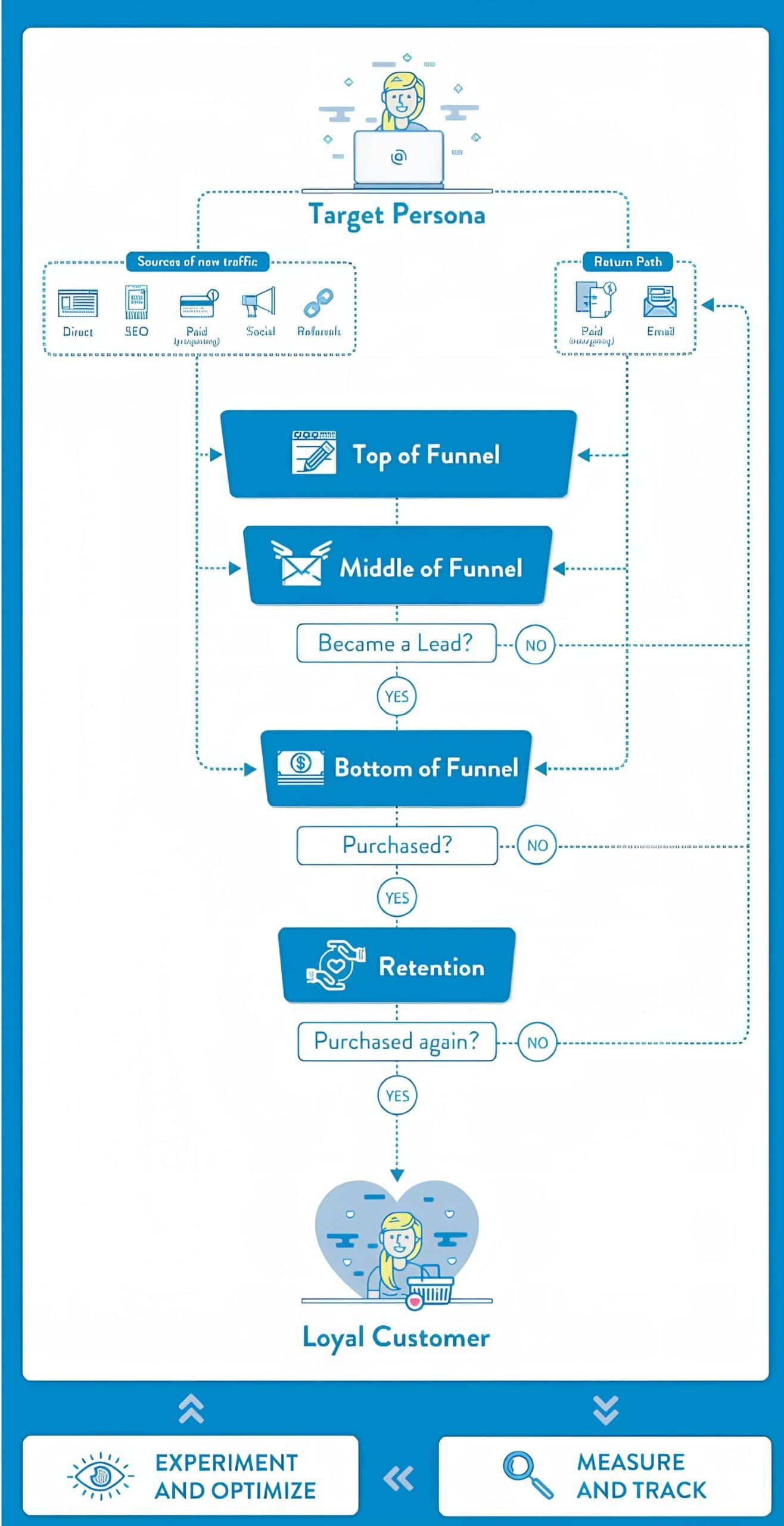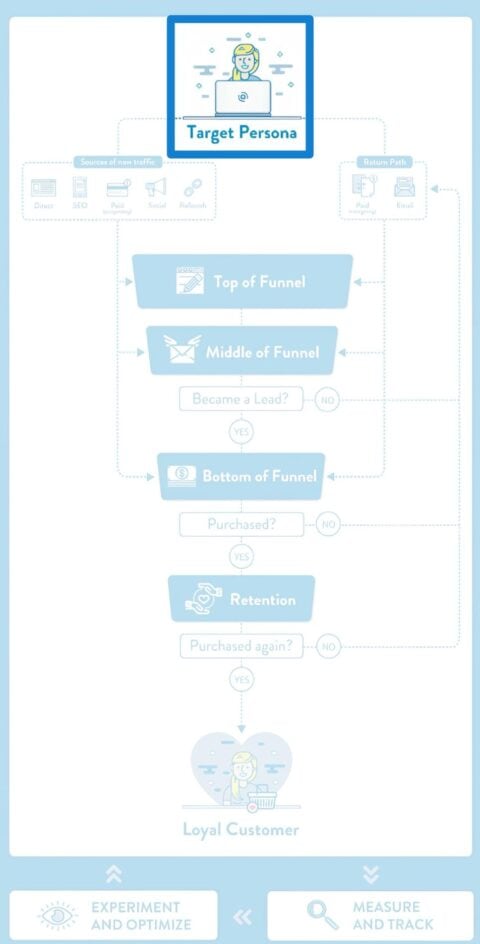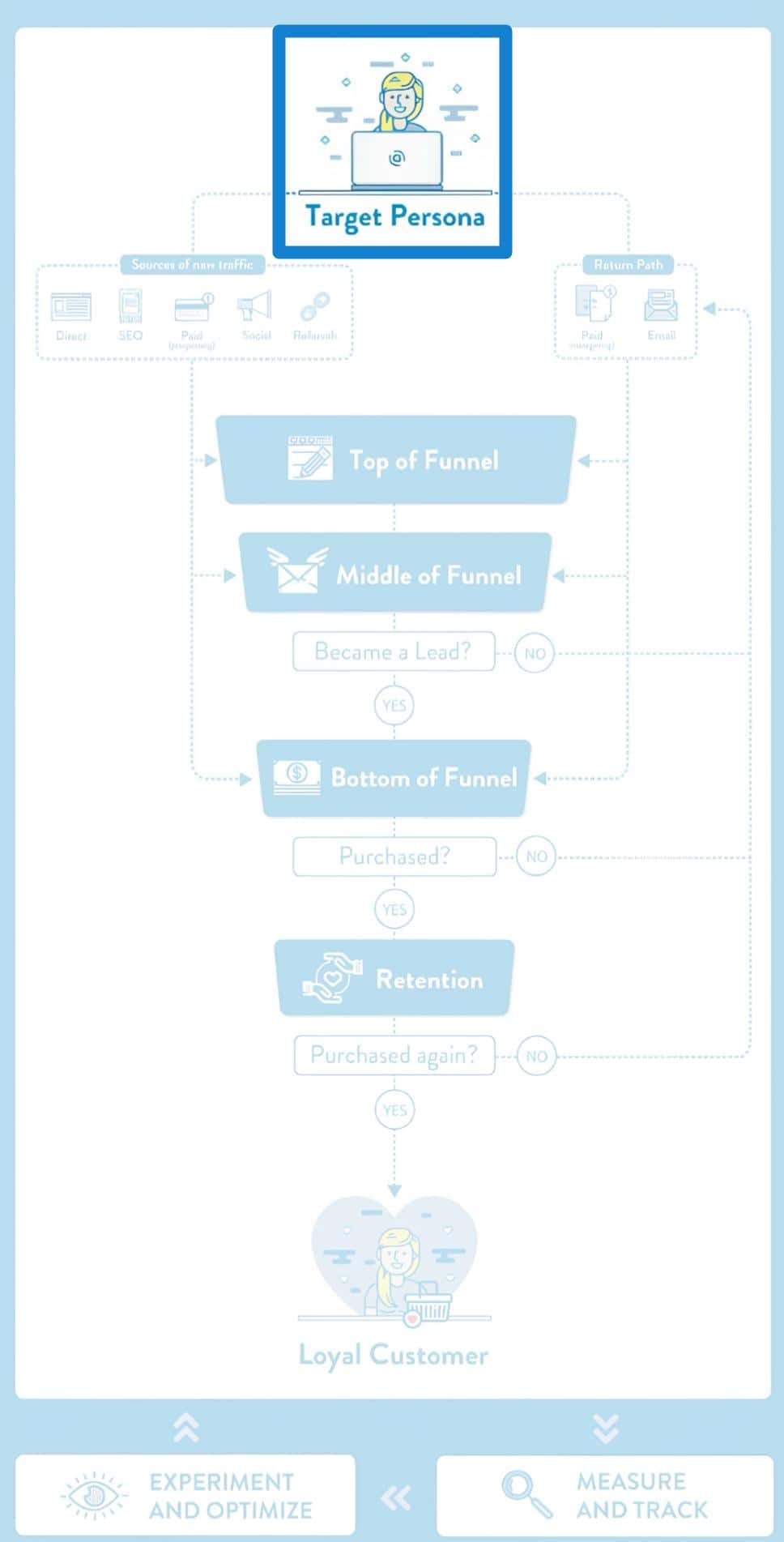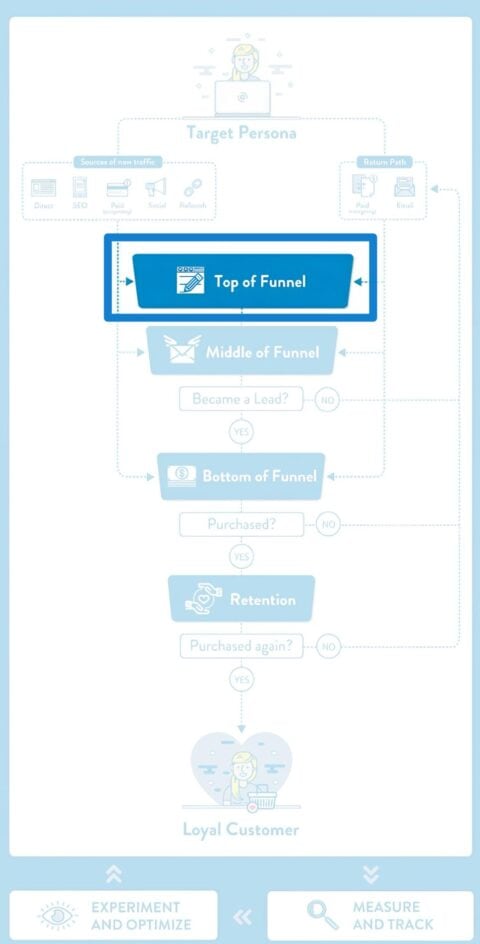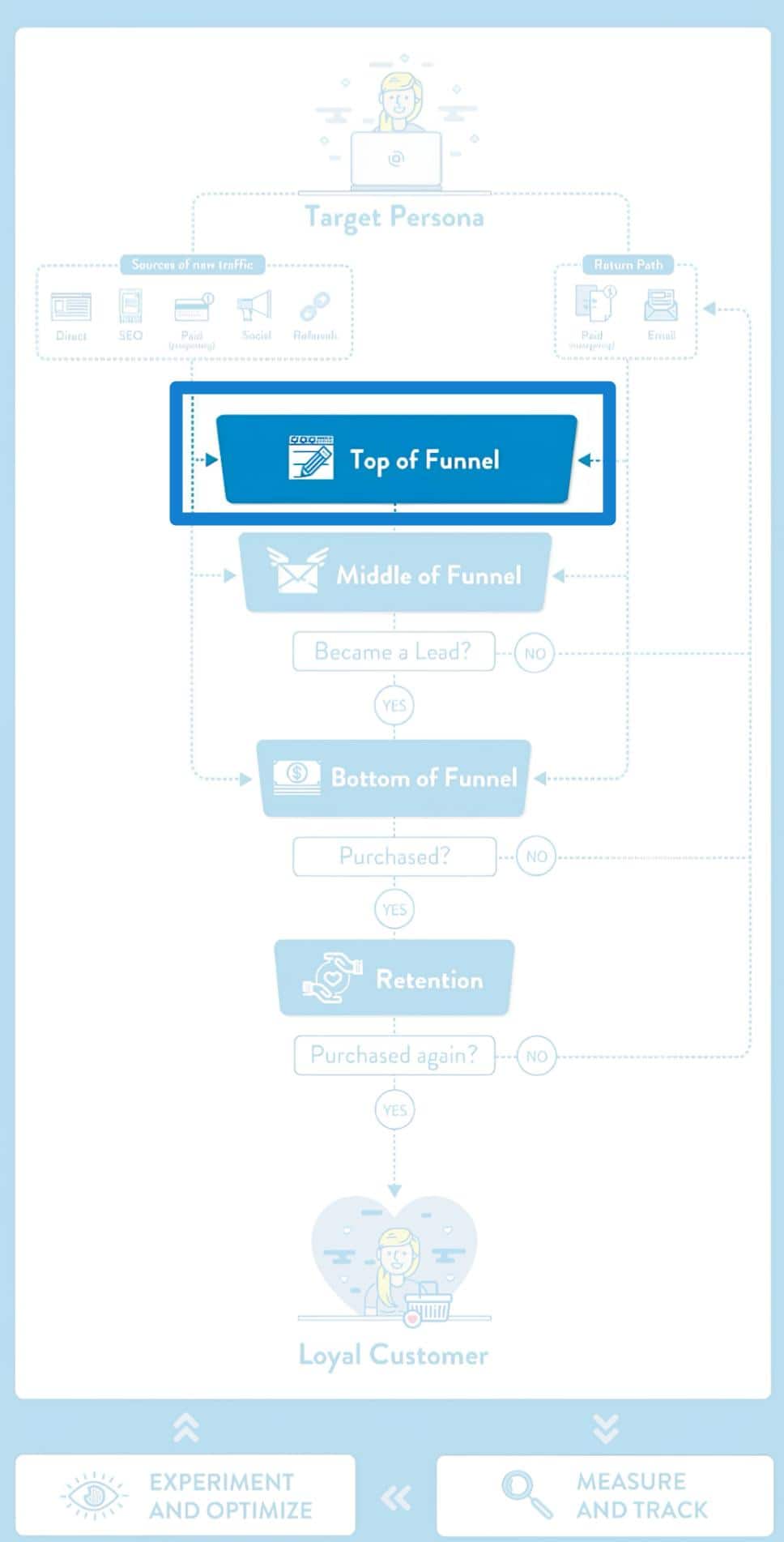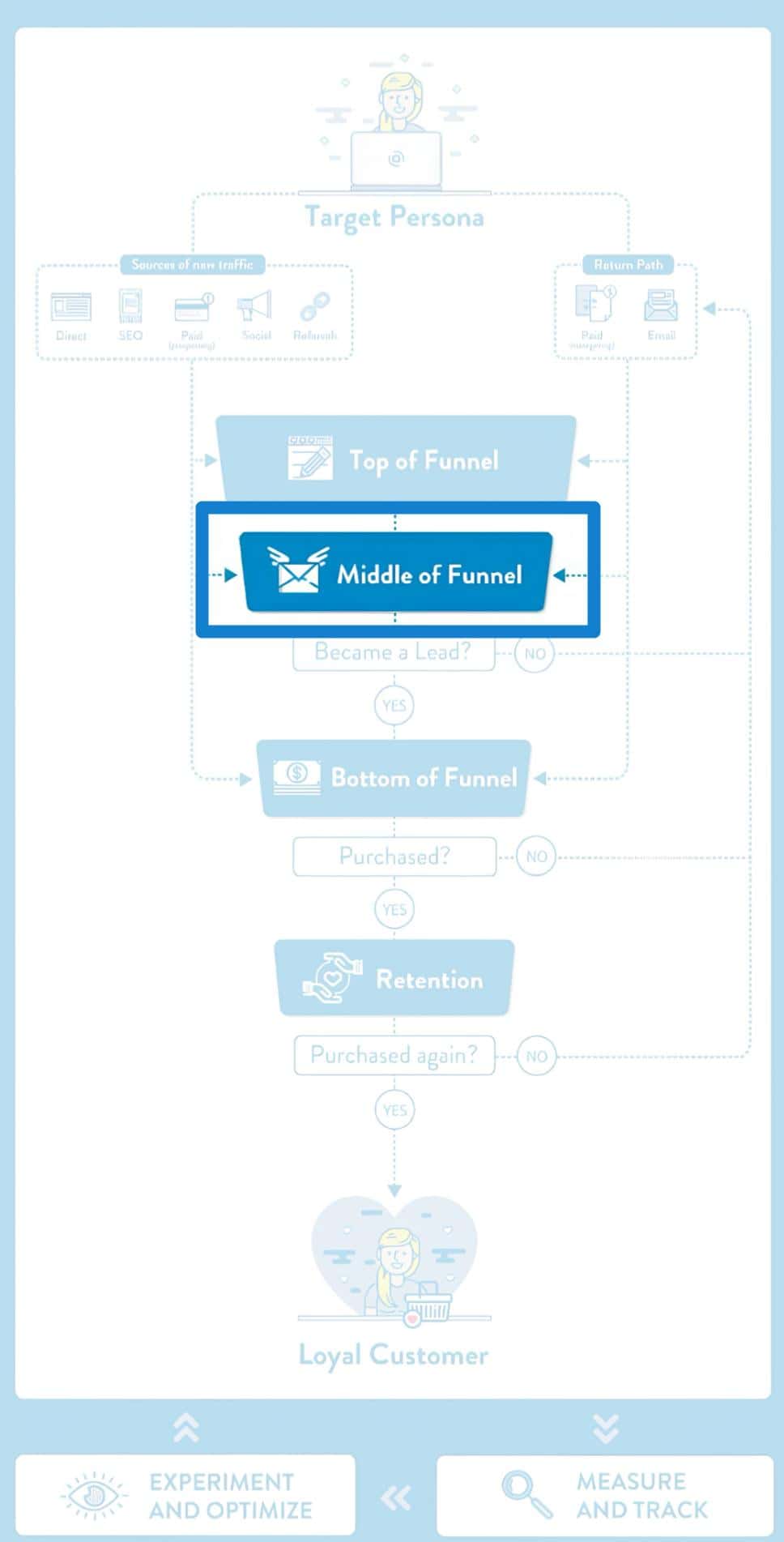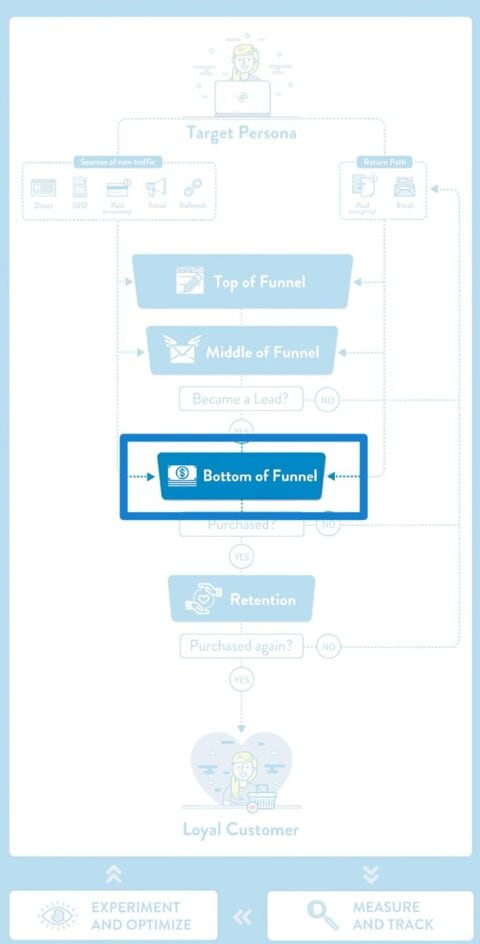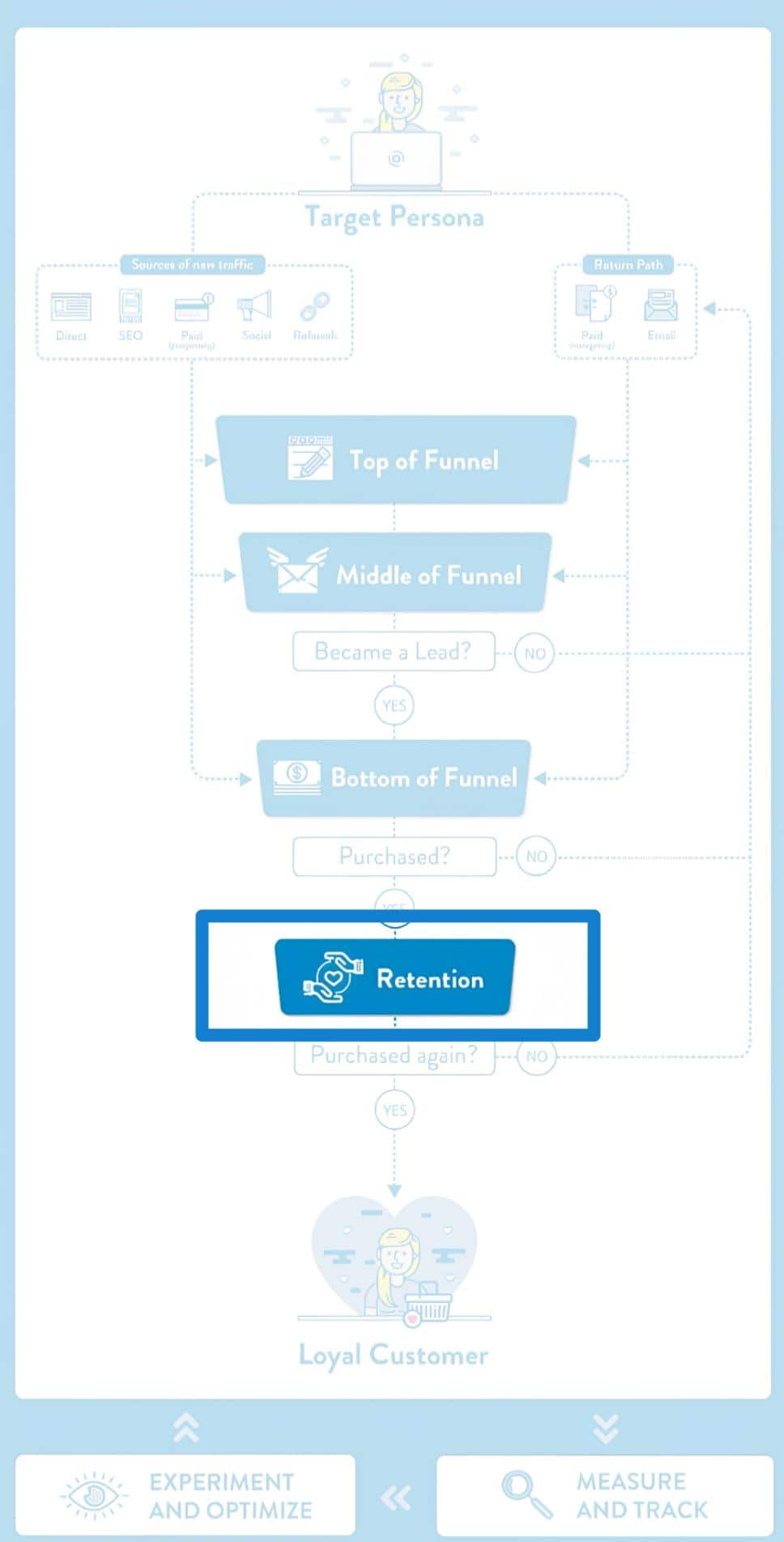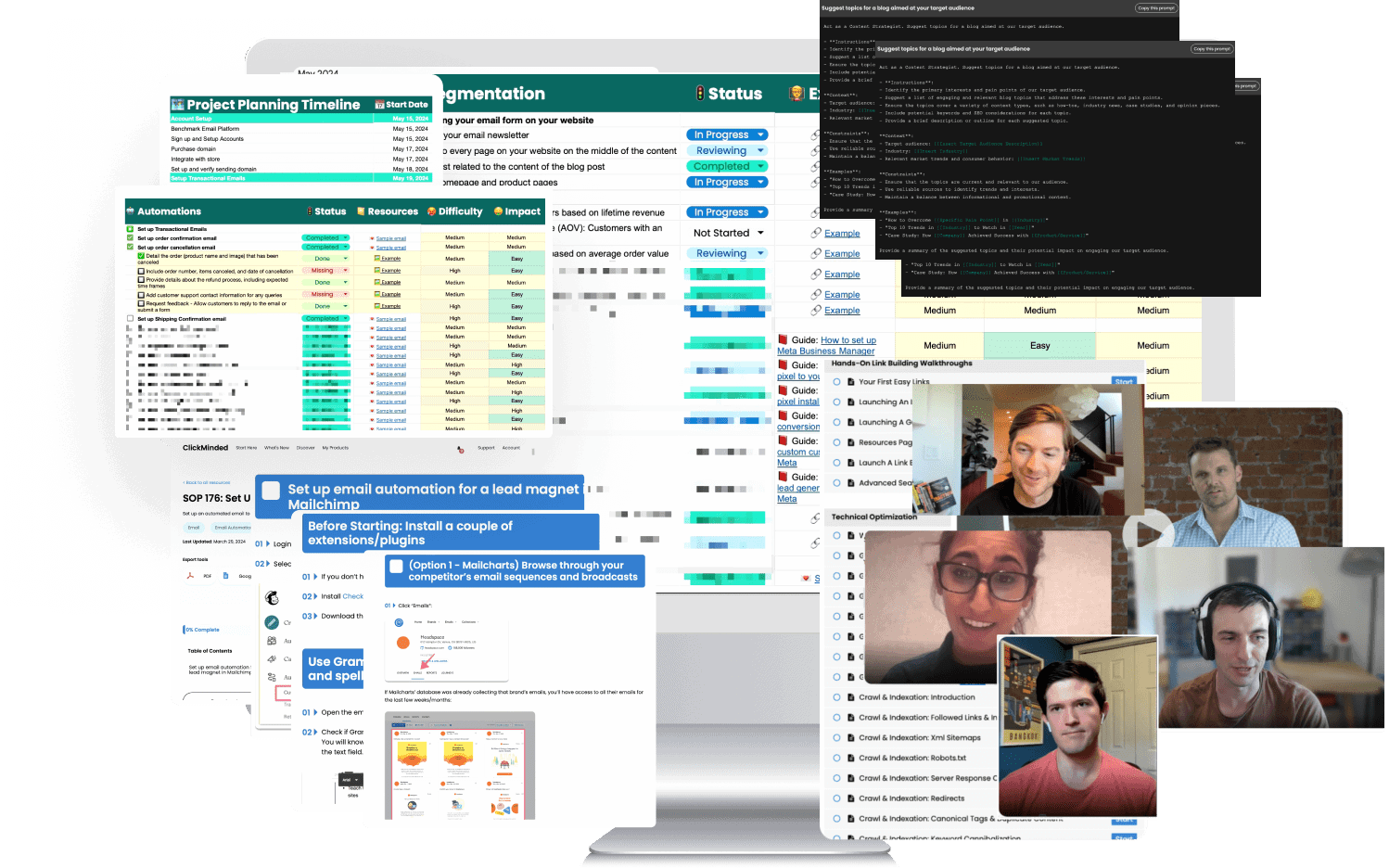📈
Your Goal at the Retention Stage: Increase Lifetime Value
In the retention stage, your marketing persona is already a customer of your product. Your objective is to increase the value you can extract from them directly by generating repeat purchases, upsells, or reducing churn; or indirectly by improving brand image or promoting referrals.
Customer lifetime value (CLV)
📝
Content Marketing
The objective of the content you'll create at the retention stage is to keep your existing customers happy by providing ongoing value (even after purchasing.)
Content ideas:
Monthly newsletter featuring insurance tips and client success stories
Blog post: 'How to Maximize Your Insurance Benefits'
Video series: 'Explaining Your Insurance Policy Coverage Details'
Infographic: 'The Benefits of Regularly Reviewing Your Insurance Policies'
Interactive web tool: 'Calculate Your Potential Savings with Policy Adjustments'
What to measure:
Open rates for the monthly newsletter
Engagement metrics on blog posts
🔎
SEO
At the bottom of the funnel, you'll want to make sure your marketing persona can find all the information she needs to get the most of your product (e.g. knowledge base articles), or to solve any problems that may arise (e.g. support/contact page.)
Keyword ideas:
'Benefits of reviewing insurance policies', 'How often should you check your insurance coverage?', 'Understanding policy renewals', 'Common insurance pitfalls to avoid', 'Insurance claims process overview', 'Maximizing your insurance benefits', 'Customer testimonials and reviews', 'Family health insurance savings', 'Best practices for home insurance reviews', 'Insurance adjustments for life changes
What to measure:
Organic traffic to retention-focused content
Average time spent on retention pages
Improvement in search rankings for retention-related keywords
🎯
Paid Advertising
At this stage of the funnel, you might choose to be run campaigns promoting of new features, upgrades, or promotions.
Target audience ideas:
[Remarketing] Facebook Ads: Previous clients showcasing policy review benefits
[Remarketing] Google Ads: Users who've engaged with retention content but haven't taken action
[Remarketing] YouTube Ads: Viewers of client retention testimonial videos
[Prospecting] Instagram Ads: Users interested in personal finance and insurance literacy
[Remarketing] Google Ads: Clients who attended a webinar to encourage policy reviews
What to measure:
Return on ad spend (ROAS) for retention campaigns
Click-through rate (CTR) on remarketing ads
Cost per engagement for targeted social media ads
📱
Social Media
Retention campaigns on social media revolve around building a sense of community with your existing customers. You'll do a lot of monitoring of brand mentions on social media.
Social media campaign ideas:
Engage in followers' comments about their insurance experiences
Host live Q&A sessions clarifying common insurance concerns
Create community posts asking clients about their insurance satisfaction
Share tips on how to review and adapt insurance plans on Instagram
Encourage customers to share their stories using a dedicated hashtag
What to measure:
Engagement rates on community posts
Follow-up interactions from live sessions
Hashtag performance metrics
📧
Email Marketing
Retention email campaigns will be a mix of educational emails (onboarding, activation, etc), transactional emails (reports, receipts, reminders, etc), and promotional emails (upgrades, upsells, etc.)
Email marketing campaign ideas:
Monthly performance report email highlighting coverage benefits and savings
Personalized emails inviting clients to schedule a review of their policies
Client feedback survey email to gather insights on services
Exclusive offers email for renewing clients
Educational email series on maximizing insurance value over time
What to measure:
Engagement rates on performance report emails
Response rates from client feedback surveys
Renewal rates after exclusives offered through email
🧪
Marketing Experiments
Your retention experiments will have the objective of maximizing lifetime value of existing customers.
Experiment ideas:
A/B test different subject lines for monthly newsletters
Run a split test on the design of performance report emails
Assess different formats for educational email series
Test varying times sent for retention campaigns
Experiment with CTA placements in client feedback surveys
What to measure:
Open rates on A/B tested emails
Click-through rates on different email designs
Engagement levels from feedback survey responses


